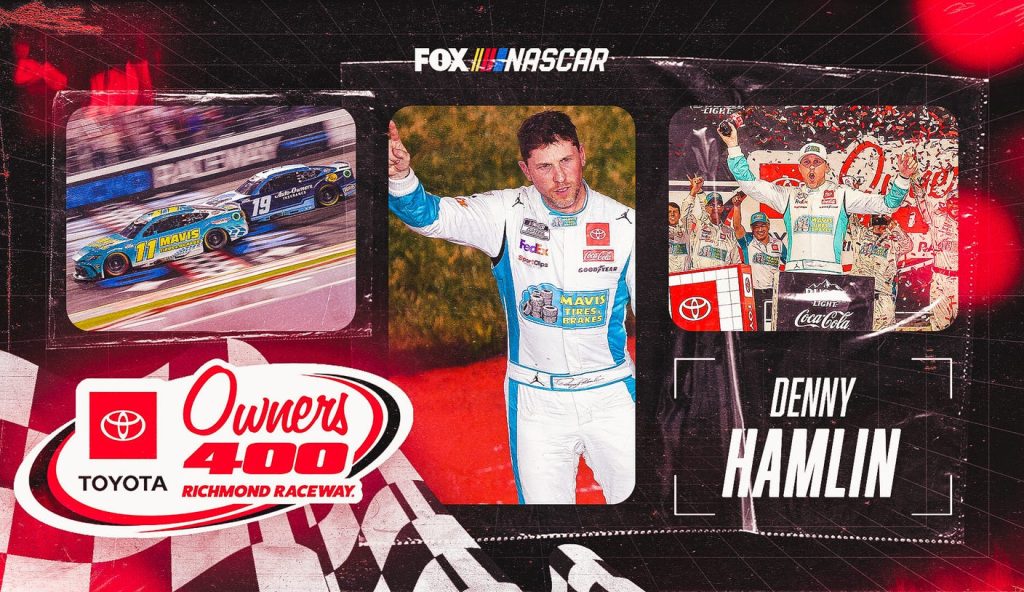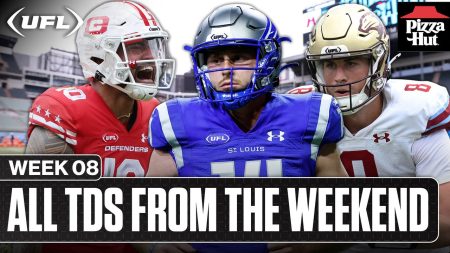Short-track racing often involves late passes for the win that require drivers to get physical with one another. The latest NASCAR Cup Series race at Richmond saw Denny Hamlin make a late-race pass on pit road after Bubba Wallace and Kyle Larson had some contact. Despite feeling that Martin Truex Jr. was the deserving race winner, Hamlin took the lead and went on to win his second victory of the season, securing his 53rd career win in his fifth career Cup victory at the 0.75-mile track. Joey Logano, Larson, Truex, and Chase Elliott rounded out the top five.
Truex, who led most of the final laps and appeared to have the race in hand before the late caution, left frustrated, believing Hamlin jumped the restart by hitting the gas early. Regardless, Hamlin’s move was deemed legal by NASCAR officials. Hamlin admitted it was a strategic decision to beat his teammates and competitors, ensuring that they didn’t get an advantage his team had earned on pit road. Wallace and Larson also had a conversation post-race, with both acknowledging it was unintentional contact and showing sportsmanship despite the incident.
Intermittent showers at Richmond led NASCAR to make use of wet weather tires to start the race, a first for the Cup Series in a points race on an oval. After 30 laps, teams were switched to slick tires, avoiding any major incidents due to the track conditions. While some may question whether this approach could be used elsewhere, NASCAR officials emphasized that it might not be feasible on faster tracks due to safety concerns. Overall, NASCAR considered the implementation of wet weather tires a success, allowing the race to proceed without significant delays and keeping fans entertained.
Hamlin’s win at Richmond was a team effort that showcased the importance of pit strategy in securing victory. He acknowledged the role of his team in helping him clinch the win, emphasizing that pit crews play a crucial role in the outcome of races. Despite Truex’s frustration and perceived unfairness in the final restart, NASCAR’s review confirmed the legality of Hamlin’s move. The race highlighted the competitive nature of NASCAR, with drivers pushing boundaries in pursuit of victory and maintaining sportsmanship even in intense moments.
The race at Richmond also featured a historic moment, with NASCAR starting the race on wet-weather tires due to inclement weather conditions. The decision to use these tires and proceed with the race rather than delay it was met with approval from drivers and officials, allowing fans to enjoy the event without significant disruptions. While this approach may not be suitable for all tracks, NASCAR considered it a successful experiment that added excitement and unpredictability to the race. Overall, the use of wet weather tires proved to be a well-received innovation that kept fans engaged and showcased adaptability in challenging conditions.
In conclusion, Denny Hamlin’s victory at Richmond, accompanied by strategic pit stops and late-race drama, reflected the intense competition and sportsmanship present in NASCAR. The use of wet weather tires added a unique element to the race, demonstrating NASCAR’s ability to adapt to changing conditions while ensuring the safety of drivers and spectators. Despite controversies and challenges throughout the event, the Toyota Owners 400 at Richmond culminated in an exciting finish that showcased the skill and determination of NASCAR drivers and teams. As the season progresses, fans can expect more thrilling races and memorable moments in the NASCAR Cup Series.















